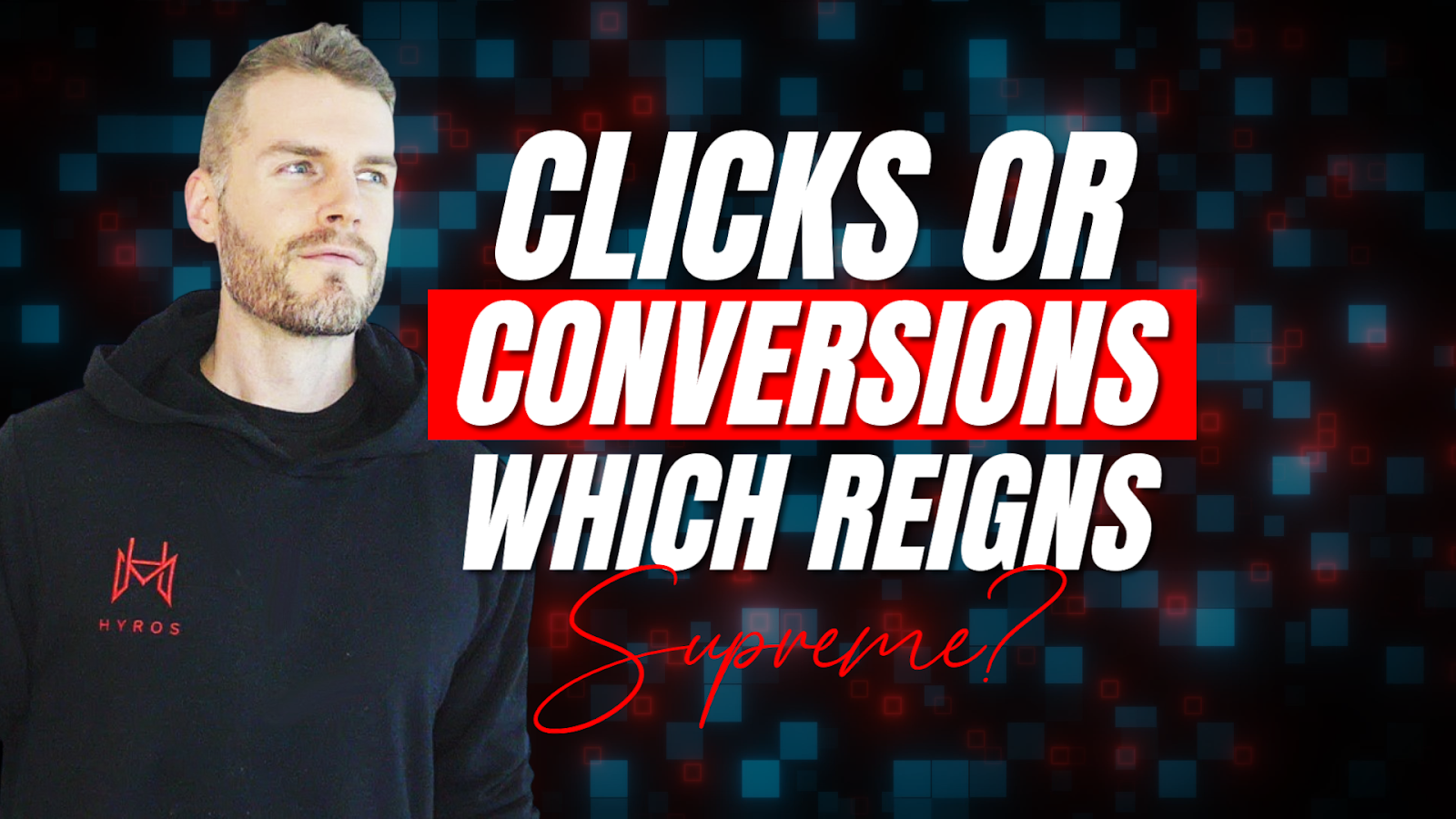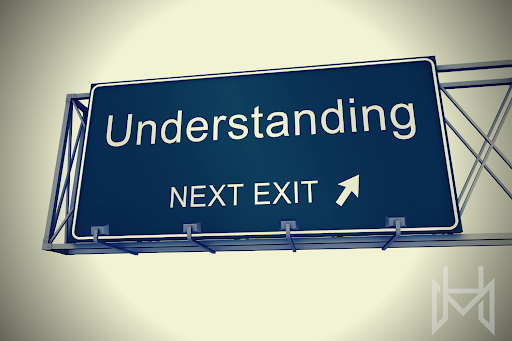
Clicks or Conversions: Which Reigns Supreme?
Are you ready for an epic showdown? In this corner, weighing in with the ability to improve your page rank and build brand awareness, we have clicks! And in the other corner, the heavyweight champion of turning visitors into ideal customers and boosting revenue: conversions! Ding, ding! Let the battle begin!
But wait, let’s not get too hasty. The real question is: are clicks better than conversions, or do they both hold a special place in the world of digital marketing? In this two-part series, we will dive in and find out!
A Tale of Two Metrics: Clicks and Conversions
Before we dive headfirst into the epic showdown between clicks and conversions, let’s take a moment to introduce these two digital marketing powerhouses:
Clicks: Whenever a user taps on your ad, link, or any other clickable element you’ve put out there in the digital world, it’s considered a click. These oh-so-important clicks can pave the way for website visits and might even lead to those coveted conversions.
Conversions: Now here’s where things get juicy! Conversions occur when users take that desired action after clicking on your ad or link. This could be anything from making a purchase (ka-ching!) to signing up for your newsletter or booking an appointment with you.
In essence, the relationship between clicks and conversions is like an enchanting love story. One simply cannot exist without the other, and together they form the ultimate dynamic duo in digital marketing.
Why this matters
At this point, you’re probably asking yourself: why should I care about all this? Aren’t conversions clearly better since they bring me closer to my goals (sales or sign-ups)?
Well, yes…and no! It turns out that cost plays a huge role in this equation. Clicks generally come at a lower price than conversions – often by quite a significant margin – which means if you’re watching your budget closely (and who isn’t?), focusing on clicks could give you more bang for your buck.
But wait – there’s more! On top of being kinder to your wallet, clicks are fantastic at boosting brand awareness and improving page rank. When people click on those ads or links of yours, Google takes notice – it’s like waving hello at them saying “Hey look! We’re legit!” And over time? That’ll help raise your search engine ranking!
What’s extra cool is that click optimization works faster when using the advertising AI of Google and Facebook. With instant feedback on what’s working (and what needs a little tweak), your digital marketing can pivot at lightning speed, giving you a leg up on your competition. Plus, this means that in the short term, you’ll actually be saving money since you won’t have to twiddle your thumbs waiting for those conversions to roll in before making adjustments.
So there you have it – clicks and conversions are like two peas in an online marketing pod! Understanding their unique strengths and how they work together is essential for any savvy marketer looking to make waves in the digital space.
The Importance of Understanding User Intent

Nailing the perfect harmony between clicks and conversions hinges on grasping user intent. By figuring out why users are clicking on your ads, as well as what they hope to discover, you can fine-tune your content, messaging, and targeting to cater to their needs – all while driving some seriously impressive results.
So how do we crack the code of user intent? Check out these nifty strategies:
- Keyword Sleuthing: Put on your detective hat and investigate which keywords users are searching for when they click on your ads or wander over to your website. This intel can shed light on their wants and desires.
- User Chit-Chat: Why not ask users directly about what makes them tick? Conduct surveys inquiring about their needs, likes, dislikes, and expectations when mingling with your brand online.
- Studying On-Site Antics: Keep an eye on how users interact with your website – from the pages they peruse to the time spent exploring each page and any actions taken along the way. With this data in hand, you’ll be able to spot patterns and preferences that give insight into user behavior.
With this treasure trove of knowledge at your fingertips, you’re ready to craft a marketing strategy that strikes just the right balance between clicks and conversions for tip-top results. Decode user intent like a pro marketer – it’s elementary!
Clicks: The Unsung Heroes
Picture this: you’re a superhero in the realm of online advertising, and clicks are your trusty sidekick. Sure, they might not steal the limelight like those flashy conversions do, but boy oh boy, do they pack one heck of a punch! With just a tiny tap on your ad or link, these humble clicks can send ripples through cyberspace and open up a treasure trove of opportunities for your brand.
Think about it – every click is like giving Google an enthusiastic high-five. The more people click away at your content, the higher up you’ll soar in those all-important page rankings! It’s as if you’ve won over that cool kid at school (you know who we mean…Google!) and earned their golden seal of approval.
The Perks of Clicks

Ready to unravel some exciting benefits that come from embracing clicks in your digital marketing campaign? Strap yourselves in!
- Improved Page Rank: Every click boosts that positive rank signal for Google. Before you know it, you’ll be climbing that search engine ladder faster than Spider-Man himself – watch out competitors!
- Cost-Effectiveness: When it comes to optimizing for clicks in online ad campaigns versus chasing after those pricey conversions – well folks, it’s kind of a no-brainer! You get way more bang for your buck when focusing on platforms like Google Ads and Facebook ads.
- Brand Awareness Bonanza: Did someone say fantastic brand exposure? Oh yeah – we did! Each time someone clicks on your content (even if they don’t convert right then), they’re getting cozy with your brand name which could lead to some sweet future conversions down the line.
Like any good sidekick worth their salt, clicks also play an essential role in helping you get to know your target audience better. By analyzing click data, you can gain valuable insights into what makes your audience tick and refine your content to better resonate with them.
So, the next time you’re planning a digital marketing campaign, don’t forget about these unsung heroes of the online world. Clicks might not be as glitzy as conversions, but they sure do pack a powerful punch that can propel your brand to new heights!
Iterating Your Campaign Based on Cheap Click Data

When it comes to understanding user behavior and preferences, analyzing click data can be a game-changer. This invaluable information allows you to develop even more engaging and effective marketing strategies that truly resonate with your audience. Let’s dive deeper into some amazing benefits of using click data for your digital marketing campaign:
- Unearthing Data-Driven Insights: One of the top advantages that clicks provide is offering valuable insight into your target audience’s demographics, interests, and browsing habits. By understanding these factors, you can create highly personalized and relevant content tailored specifically for your users. This increases the likelihood of future conversions as users feel more connected to what you’re presenting.
- A Testing Ground for Refinement: Clicks serve as an excellent means to test and fine-tune your marketing strategies. Keep an eye on click-through rates (CTRs) while making adjustments in ad copy, design elements, targeting options, or other variables to find that perfect formula that drives both clicks and conversions successfully.
- Enhancing User Experience: Analyzing clicks can help pinpoint areas within your website or mobile app that require improvement or optimization. By studying where users are clicking (or not clicking), you have the opportunity to make necessary adjustments in design elements or content presentation – all aimed at enhancing overall user experience while simultaneously boosting conversion rates.
- Identifying Top Performing Content: Another fantastic perk of examining click data is identifying top-performing content – pieces that attract higher CTRs than others – allowing you to focus on creating similar types of material moving forward.
- Allocating Marketing Budget Wisely: With detailed insights gathered from click data analysis, you can allocate resources strategically towards high-performing ads or campaigns rather than wasting budget on underperforming ones – ensuring maximum return on investment (ROI).
- Monitoring Competitors’ Performance: As a bonus benefit, tracking industry-specific keywords and analyzing clicks can offer invaluable intelligence about your competitors’ performance. This information can be utilized to optimize your marketing strategies, stay ahead of the competition, and adapt quickly to changing trends.
Leveraging click data in your digital marketing campaign provides numerous benefits that contribute to better understanding user behavior and preferences while optimizing overall strategy for maximum impact. By utilizing this affordable yet powerful tool, you’ll be able to craft engaging content tailored specifically for your target audience – increasing both conversion rates and ROI in the long run.
The “Digital Billboard” effect

There’s a little-known technique that some digital marketers use to increase their campaign revenue long-term, which is known as the “digital billboard” effect. Basically, it includes running a campaign that explicitly optimizes for people not clicking the ad, but instead, viewing it and remembering it. In short: maximizing your impression rate & minimizing your click rate.
Why does this work? Because the vast majority of campaigns, whether it’s Facebook or Google, charge you only when someone clicks on your ad. So, by optimizing for people who will remember your brand but won’t click it (because they don’t need to), you can maximize the number of impressions and minimize your cost per impression – all while still getting a good return on investment from those that do click.
How do you use the digital billboard effect?
The digital billboard effect focuses on optimizing impressions over clicks, ensuring your ad gets viewed and remembered by as many people as possible without requiring them to click. To achieve this effect, you’ll need to tweak your ad copy, design elements, targeting options, and other variables accordingly.
Here are some valuable tips to make the most of the digital billboard effect:
Skip Calls-to-Action
While it may seem counterintuitive at first, avoid including calls to action in your ad copy for this strategy. The goal here is not to drive clicks but rather to create a lasting impression that will resonate with viewers.
Prioritize Visual Appeal
A visually appealing and memorable ad goes a long way when it comes to maximizing impressions without driving clicks. Incorporating humor or abstract imagery can help draw attention while steering clear from encouraging users to click on your advertisement.
Smart Targeting Choices
Effective targeting is crucial for achieving desired results with the digital billboard effect. Focus on demographics such as younger individuals or tech-savvy professionals who are likely bombarded with ads daily and less inclined to click through them.
Retarget Strategically
Retargeting enables you to display your ads in front of those who have previously engaged with your brand or product – making them more inclined towards remembering your message even if they don’t click on it again.
Monitor Metrics Carefully
Keep an eye on metrics like viewability rates and brand recall instead of just focusing exclusively on CTRs (Click Through Rates). This allows you a better understanding of how effectively you’re creating lasting impressions among viewers without necessarily driving traffic directly from ads.
Experiment & Iterate
Don’t be afraid to test different creatives, messaging approaches, or designs frequently – learning what works best for maximizing memorable impressions within specific target groups will only strengthen future advertising campaigns’ effectiveness using this strategy.
By utilizing these tips and embracing the digital billboard effect, you can create a lasting impression on your target audience without needing them to click through. Remember, the goal is to boost brand awareness and visibility so that when users are ready to engage with your product or service, they’ll recall your memorable ads – leading them back to you in their time of need.
Conversions: The Ultimate Goal
Now let’s talk about the crowd favorite: conversions. These bad boys are the rockstars of the digital marketing world and for good reason. Conversions are the end goal of your marketing campaign, turning casual visitors into paying customers and making it rain revenue.
Conversions can come in many forms, from making a purchase to signing up for a newsletter or booking a consultation. Regardless of the type, conversions mean results. It’s like scoring the winning goal in a soccer match or finally getting that perfect selfie after 50 attempts.
Measuring Conversions

In the epic battle of clicks vs conversions, it’s essential to measure a few key metrics to gauge your marketing efforts:
- Conversion Rate: The percentage of visitors who take a desired action, such as making a purchase or subscribing to a newsletter.
- Return on Investment (ROI): The profit generated from your marketing efforts compared to the amount spent on the campaign.
- Return on Ad Spend (ROAS): The revenue generated from your ad campaign compared to the amount spent on the ads.
Conversions also help you build long-term relationships with your customers. When users convert, it’s an opportunity to establish trust, gather feedback, and foster brand loyalty.
More Conversion Metrics
Let’s look at some additional metrics to measure the success of your conversion-focused marketing efforts.
Customer Lifetime Value (CLTV)
This is the total revenue you can expect from a single customer over the course of their relationship with your business. CLTV helps you understand the long-term value of your marketing efforts and prioritize customer retention.
Customer Acquisition Cost (CAC)
CAC is the cost of acquiring a new customer through your marketing efforts. This cost-per-acquisition metric helps you evaluate the efficiency of your marketing campaigns and identify areas for improvement.
Net Promoter Score (NPS)
Finally, NPS is a measure of customer satisfaction and brand loyalty. This metric can help you gauge the success of your marketing efforts in fostering long-term relationships with your customers.
Striking the Perfect Balance
Alright, let’s call a truce. We need both clicks and conversions to have a truly successful digital marketing campaign. They’re like peanut butter and jelly or Batman and Robin; they just go together.
Finding the right balance between clicks and conversions is crucial for success. You want to get people clicking, but you also want those clicks to turn into results. This requires a harmonious blend of creative, engaging content, strategic targeting, and data-driven optimization.
The Art of Balancing Clicks and Conversions
To achieve this harmony, you’ll need to optimize your website and ad content for both clicks and conversions. Here are some strategies to help you find the perfect balance:
- A/B Testing: Test different versions of your website, ad copy, and design elements to see what resonates with your audience and drives both clicks and conversions.
- Call-to-Action (CTA) Optimization: Create compelling, clear CTAs that encourage users to click and take the desired action.
- Targeting the Right Audience: Ensure your ads are reaching the people most likely to be interested in your brand and take action. This can be done through demographic, interest, and behavioral targeting.
- Multichannel Marketing: Utilize a variety of marketing channels, such as search engines, social media, and email marketing sequences, to reach a broader audience and increase the chances of driving both clicks and conversions.
- Personalization: Leverage user data to create personalized content and experiences that resonate with your audience, increasing the likelihood of both clicks and conversions.
- Remarketing: Target users who have already interacted with your brand but have not yet converted. This can help you re-engage them and increase the chance of converting them into customers.
Case studies have shown that campaigns that balance clicks and conversions have more successful results. So, how do you do it? Tools like Google Analytics and Facebook Ad Manager can help you track both metrics and make data-driven decisions. Techniques like A/B testing and CTA optimization can work wonders for your website and ads.
Popular advertising platforms & their use cases

When it comes to advertising platforms, there are a few that stand out from the crowd. Google Ads and Facebook Ads are two of the most popular choices for digital marketers. Here’s a quick overview of each:
Google Ads
Google Ads is an effective platform for driving both clicks and conversions. Its keyword-based search ads allow you to target potential customers who have already expressed an interest in your product or service. Plus, its sophisticated targeting capabilities make it easy to reach the right audience with the right message at the right time.
That said, in recent years, Google has significantly increased the share of work that their AI systems are responsible for. This means that, as a campaign manager, you have less control over how your ads are delivered, which can make it difficult to analyze and optimize campaigns.
Facebook Ads
Facebook Ads is a great option for those looking to drive an increase in conversions with social media marketing. Its powerful targeting capabilities allow you to reach highly specific audiences with the right message at the right time. Plus, its detailed reporting features provide insights into user behavior and preferences, which can then be used to tailor content accordingly.
On top of that, Facebook also offers several tools designed specifically for conversion optimization such as A/B testing and dynamic creative optimization (DCO). With DCO in particular, you can test different versions of an ad within one campaign while still maintaining brand consistency across all variations.
Both Google and Facebook allow for different optimization strategies; however, each platform has its own strengths and weaknesses. In order to make the most of your digital marketing campaigns, you’ll need to carefully consider which platform is best suited for your particular needs.
Integrating Click and Conversion Data
To effectively balance clicks and conversions, it’s essential to integrate the data from both metrics. By combining click and conversion data, you can gain a more comprehensive understanding of your marketing campaign’s performance, enabling you to make more informed decisions and optimize your strategy.
Here are some ways to integrate click and conversion data:
Unified Dashboard
Use a unified dashboard to display both click and conversion data in one place, allowing you to easily compare and analyze the performance of your marketing efforts.
Attribution Modeling: Implement attribution modeling to better understand the relationship between your marketing channels and the resulting conversions. This can help you allocate your budget more effectively and optimize your marketing mix.
Cohort Analysis
Group users based on their behavior, such as when they clicked on your ad or converted, to identify patterns and trends in their actions. This can help you tailor your marketing strategies to better target and engage specific user segments.
Cross-Channel Analysis
Analyze click and conversion data across different marketing channels to determine which channels are driving the most clicks and conversions. This information can help you fine-tune your marketing efforts to focus on the most effective channels.
The Verdict
In the battle of clicks vs conversions, there’s no clear winner. Both metrics hold their unique importance in the realm of digital marketing. Our advice? Don’t just focus on one or the other; embrace both clicks and conversions to create a truly epic marketing campaign.
Now, go forth and conquer the digital marketing world with your newfound knowledge! May your clicks be plenty, and your conversions be fruitful!
